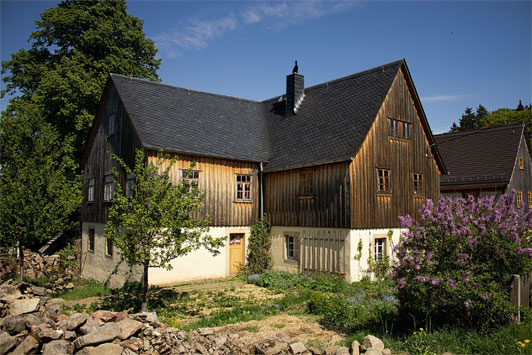Mold can be an unsightly and worrisome problem for homeowners, especially those living in humid climates. If left untreated, mold can cause structural problems as it spreads. Mold growth on a roof can cause rot, which will lead to leaks and water damage in your home.
Mold removal from a roof is not always easy to do by yourself. However, with the help of various commercial products, you can use these tips and techniques to remove mold from your roof.
1. Cover or Spray Off Nearby Plants and Soil
Cover or spray all the plants growing near your house with water, and this will help protect them from being affected by any chemicals or mold removal products you use. You can use a high-pressure sprayer to remove mold off the top of your roof, but it’s important to avoid spraying anything down onto plant growth.
Spraying or covering soil will help protect plant growth from the chemicals in some cleaning products, and it will also minimize the risk of spreading mold spores if you’re using a high-pressure cleaner.
2. Wear the Proper Safety Gear
Wear a disposable coverall and booties when you’re working on your roof. These will help protect you from any chemicals or other products that you might be using to clean the mold off your roof. It would be best to wear a mask, goggles, and gloves to clean mold off your roof.
3. Scrub Away the Thickest Buildup on Your Roof
Use a long-handled brush to clean the shingle’s surface from the bottom up, loosening any stuck-on mold while they are still dry. This will help you remove the thickest and make it easier to clean and scrub off any remaining mold after rinsing the roof with water. Wear a respirator when working with mold. Mold can be dangerous, and you don’t want to be breathing it in.
4. Mix Up Your Cleaning Solution
Don’t just spray a product onto your shingles and rooftops. It is best to use a powerful chemical solution like chlorine bleach to clean your roof properly and remove the mold for good. Make sure to add some water to make the mixture work so it can penetrate your roof and get rid of any mold underneath it.
Do not use chlorine with any product containing ammonia. It can produce toxic chlorine gas, which can be very dangerous. You can also use trisodium phosphate, TSP to help remove stains and discoloration.
5. Spray the Entire Roof Thoroughly
Start from the lowest shingles and work your way up, spraying all of the shingles from ground level to the peak of your roof. You should make sure to spray every surface, including the gutters.
The best time to clean your roof is when the weather is cool or cloudy. The solution won’t evaporate before it can be effective. It would be best if you did not use pressure washers on shingles because the force of the water can cause damage, and you might be required to install new roofing.
6. Rinse Off the Roof
Rinse with clean water from the bottom up to remove any left-over mold. Ensure to thoroughly rinse the area and don’t leave a puddle of water on your roof because this can cause future problems and increase mold growth. You may need to use a squeegee to remove excess water from your top. Avoid scraping or scrubbing the shingles because this could damage the shingles and cause them to crack or peel.
7. Apply a Sealant
To prevent future mold growth, apply a sealant to your roof as a preventive measure. Sealants will help protect your shingles from UV damage and moisture penetrating the wood, which can cause mold growth. Ensure you follow the instructions on the sealant’s packaging and apply it during a dry and warm period to allow optimum curing.
Conclusion
If you need to remove mold from your roof, don’t be afraid to use a powerful chemical cleaning product. You can also contact Tiger Team Roofing in Fort Lauderdale, FL, for any queries regarding roof cleaning.

